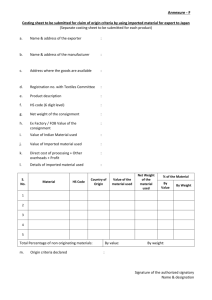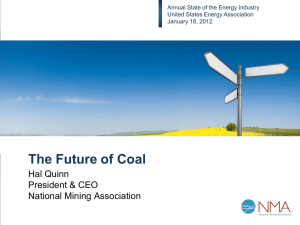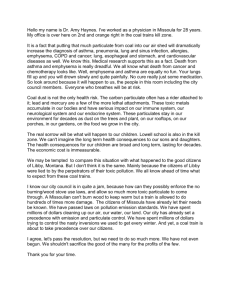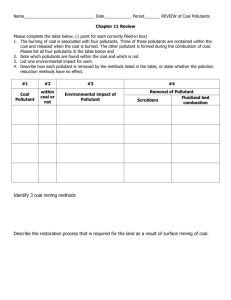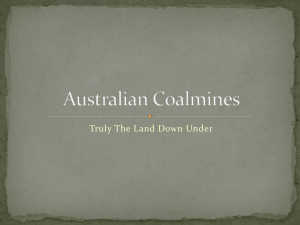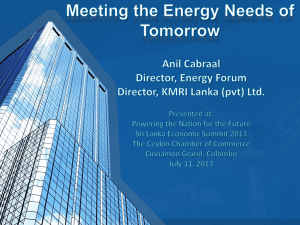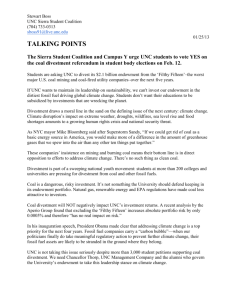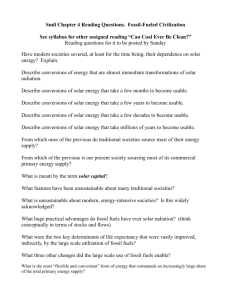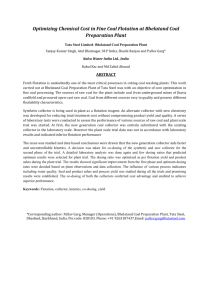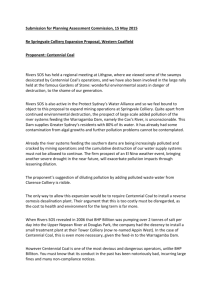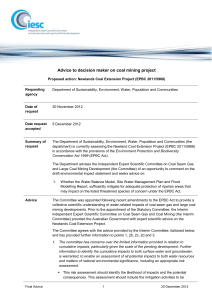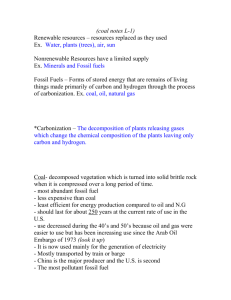PPT - Stefan.Schleicher(a)wifo
advertisement
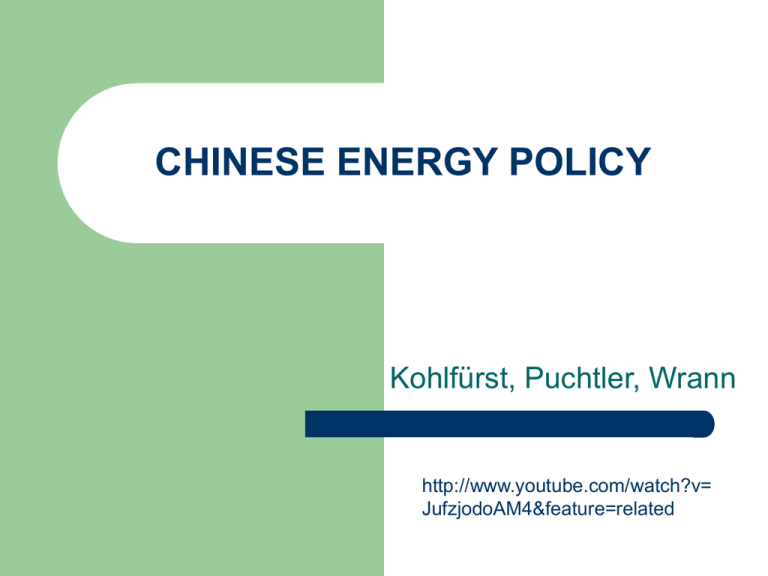
CHINESE ENERGY POLICY Kohlfürst, Puchtler, Wrann http://www.youtube.com/watch?v= JufzjodoAM4&feature=related General information on China Middle Ages: flourishing economy Trade with Europe: Chinese inventions made their way to Europe The turn came 1911 – Fall of the last dynasty Qing – opium wars, civil war, 1st and 2nd world war 1949: Mao Zedong proclaimed the Peoples Republic of China (PRC) Energy demand Exploding demand: - Net exporter: construction material - Change of living standards Energy structure Coal – – Oil – 2/3 of energy production major coal producer worldwide Net importer, highly dependant on Middle East Renewables – – – – – Biofuels: corn Solar power: photovoltaics Hydro power: Three Gorges Dam Wind power: + 95% in 2007 Nuclear power: low developement China‘s internal energy conflicts Energy vs. other resources Large reliance on cheaply available coal – – smog, acid rain, polluted waterways etc. new coal power plant approx. every 2 weeks Not only due to fossil fuels – Three Gorges Dam Power of 18 average nuclear power plants Destruction of wildlife habitat (Yangtze river dolphin) Pollution can no longer be „flushed“ by the river Relocation of up to 1,24 mio. inhabitants Economic growth vs. sustainability Economic growth vital for political stability Reliance on fossil fuels like the West not realistic long-term Huge investments in renewable energy sources – – third-largest provider of electricity from wind solar market rapidly catching up with Germany Centralized vs. decentralized generation Large power plants for big cities (predominantly in the East) Rural areas very attractive for decentralized generation – Biogas from agricultural „waste“ Local added value Clean disposal of the „waste“ Simple construction High-quality fertilizers as „by-product“ Energy supply vs. energy efficiency Investments in efficiency can greatly reduce need for new power plants 10 program priorities outlined by government – – – – Expanding co-generation Expanding centralized heating systems, etc. Highly-consuming industries (e.g. iron/steel) etc. China‘s external energy conflicts Dependence on imported Oil/Gas/Coal In the 1970s and 1980s net exporter of oil Dependence on imported oil/gas because of population growth Fourth largest producer and second largest consumer of oil More than a half of China´s energy needs are covered by imported oil Largest producer and consumer of coal Dependence on imported oil/gas/coal Power struggels because other countries of the region have the same problems The Middle East provides 58% of the imported oil China is investing in „green energiy“ to become more independent China as an exporter of energy resources China produces over 95% of the world´s rare earth supply China is constraining the export of the rare earth oxides Voting behaviour in the UN Security council China´s energy dependence is apparent especially in its relation with Iran and Iraq China seeks to secure the import routes for oil THANK YOU FOR YOUR ATTENTION

